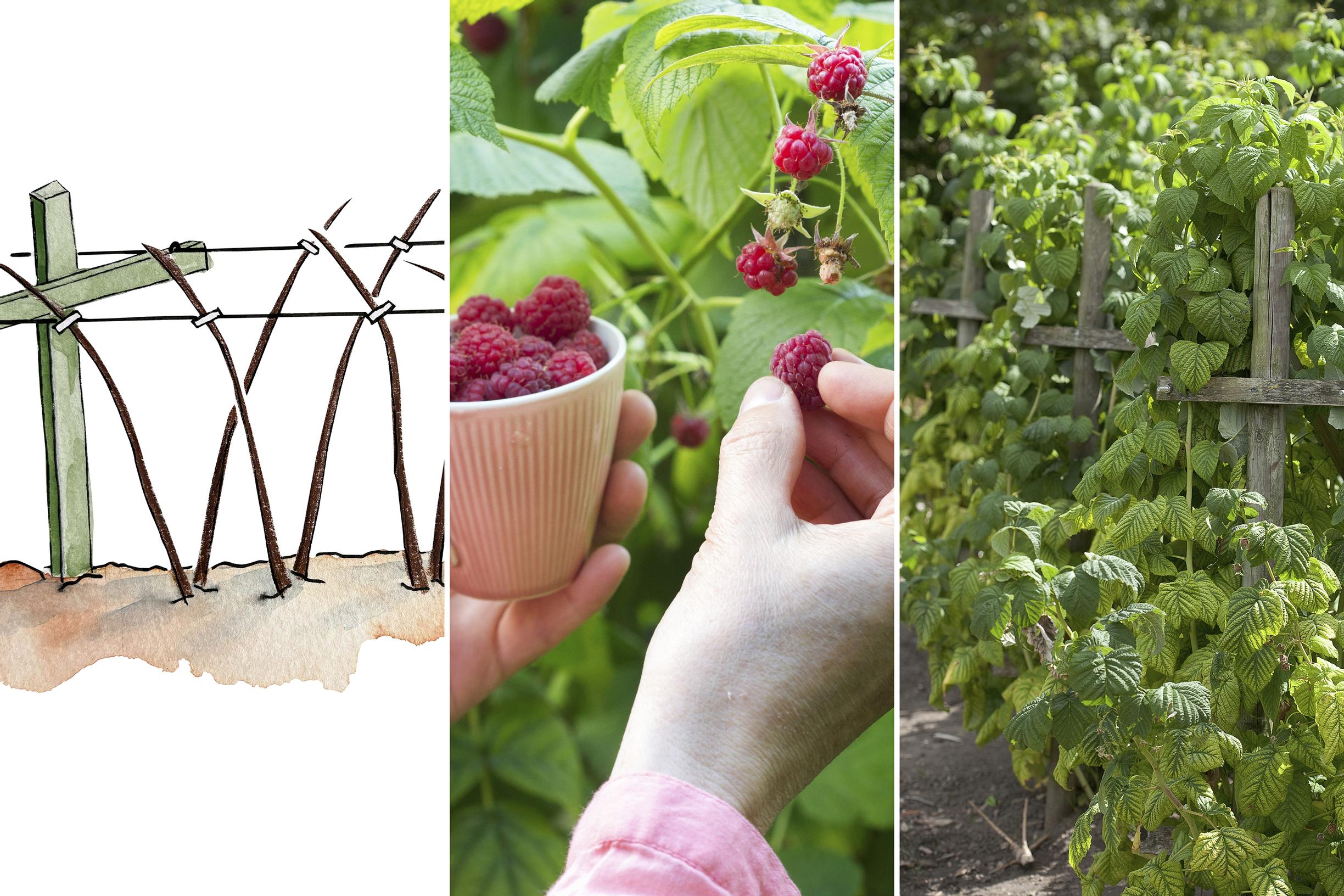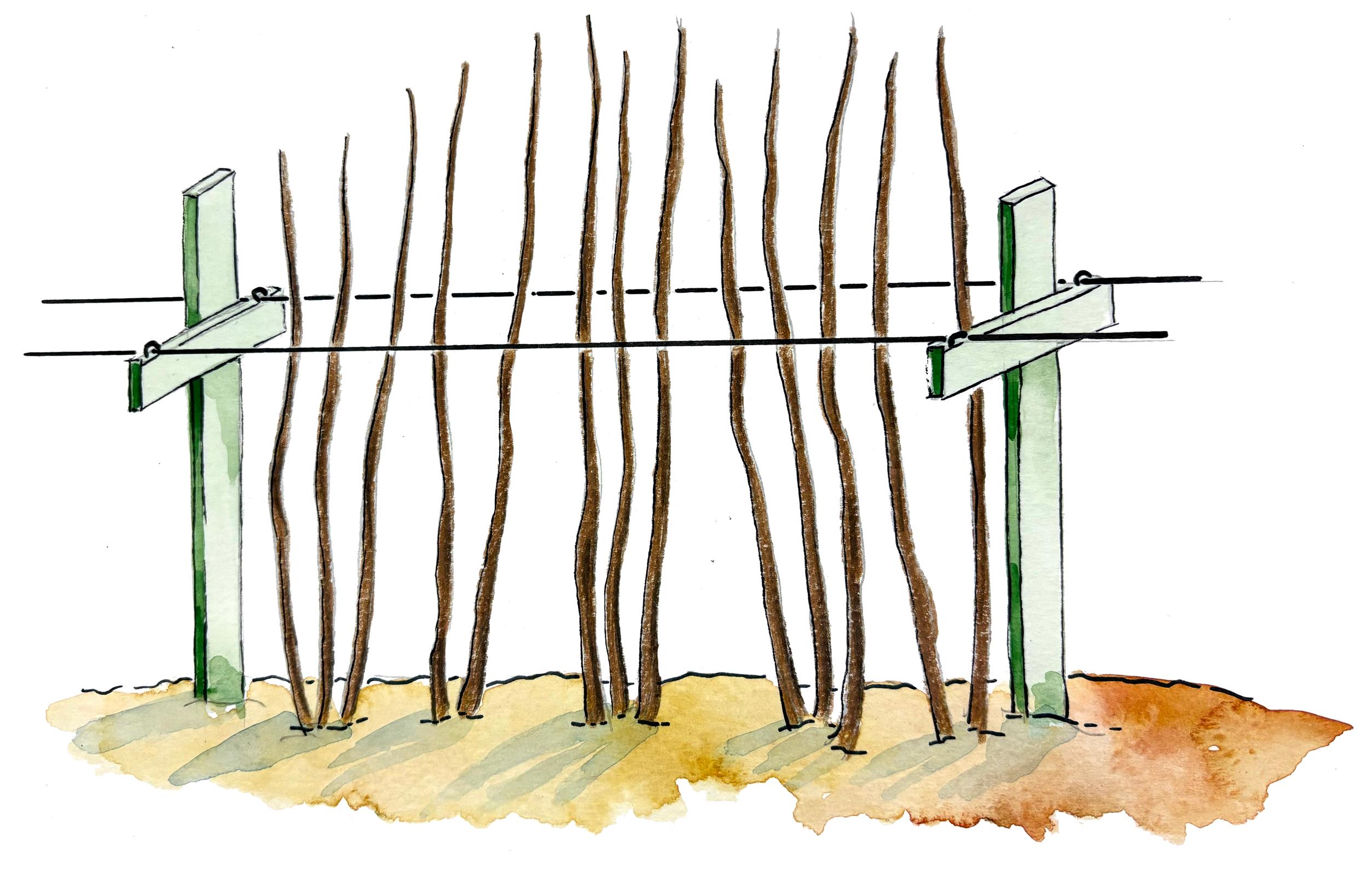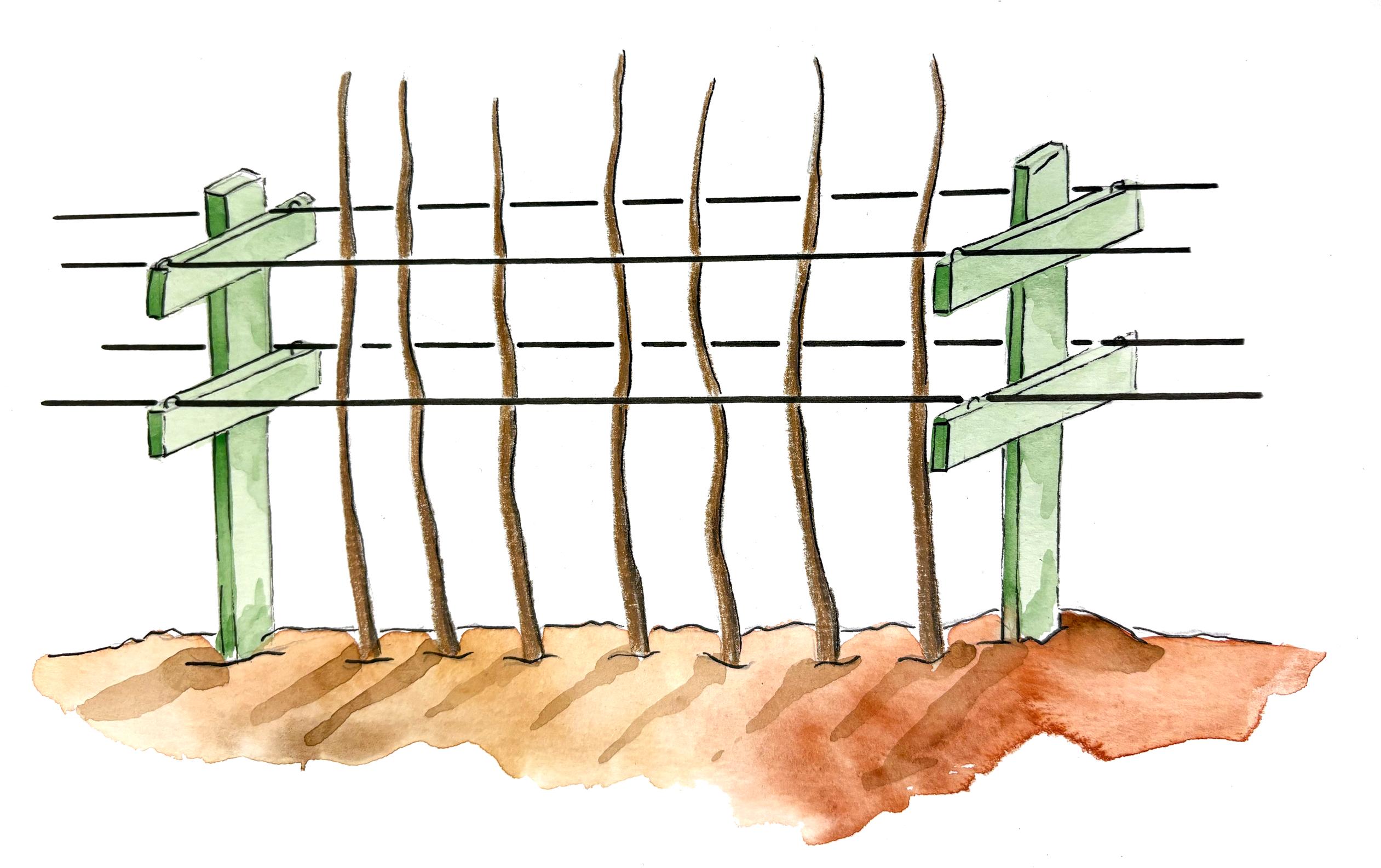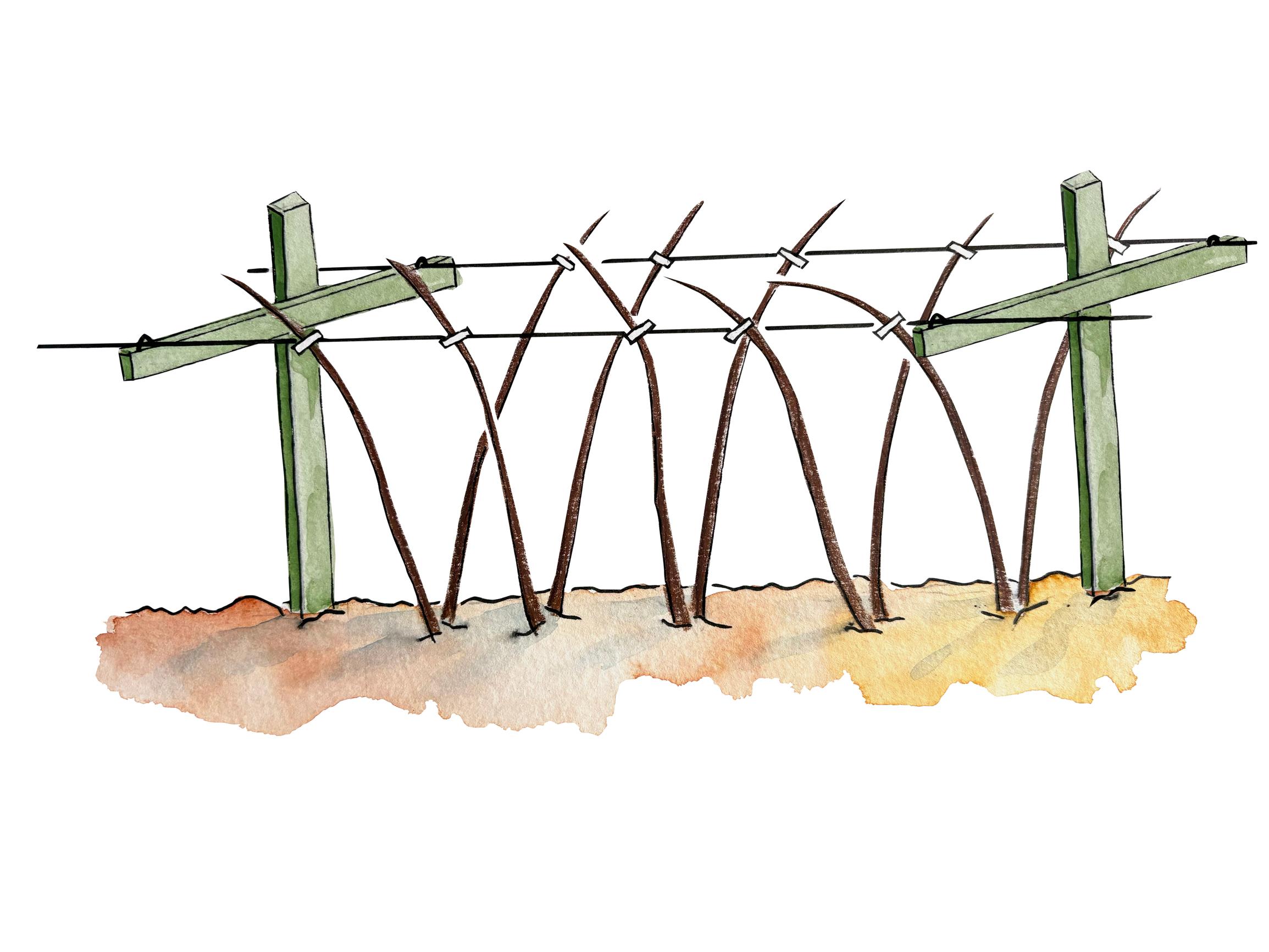
Horticulturist’s tips
Raspberry support: why V is best (and how to do it)
Raspberry T-support is the most common in home gardens, but a V-support makes berry picking easier and lets you keep more fruit-bearing canes than with T-support. The result is a larger harvest. See below for illustrated instructions on both methods of supporting raspberries.
Raspberry support: T-support
- The traditional double-wire support, also known as T-support, is the most common in home gardens.
- Raspberry canes grow heavy, especially in the rain, and strong winds can shake them vigorously. That’s why it’s wise to check the condition of your support posts regularly. They tend to rot stealthily right at ground level.
- Fasten the canes to the support wires to keep them in place.


Raspberry support: V-support
- V-support is more complex than T-support, but it’s worth the effort. It makes harvesting easier, and you can leave more fruit-bearing canes than with T-support.
- The weight of the harvest bears down heavily on the wires, so side shoots often droop over them. A second support wire helps keep the canes upright.
- Tie the canes to the wires individually at regular intervals. This improves light exposure, increases yield, makes harvesting easier, and helps prevent canes from bending in the wind.

Most recent
Latest


